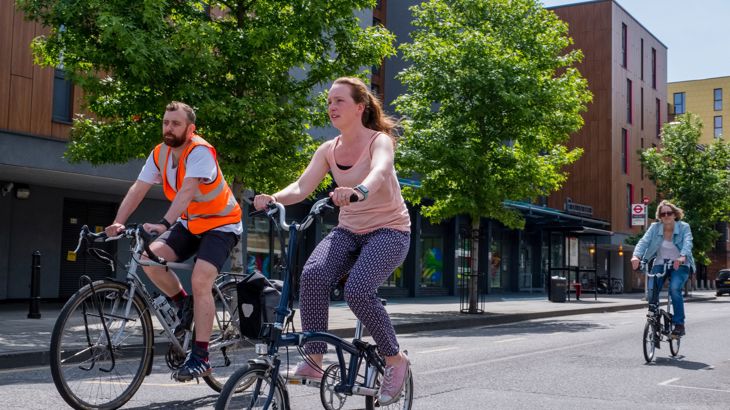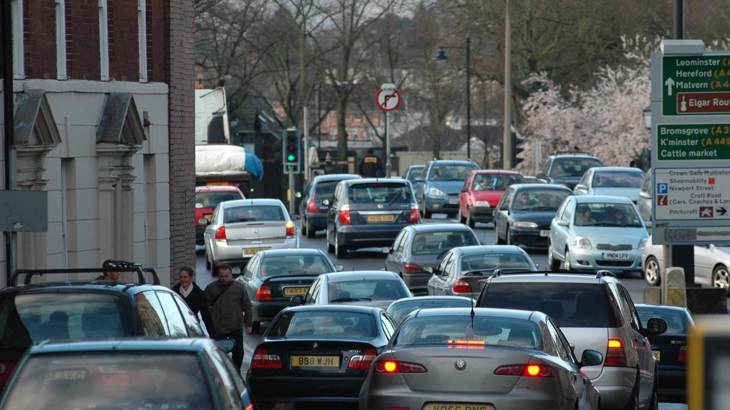As the Transport Select Committee releases a report on increasing levels of walking and cycling in England, I reflect on how this is perfect timing for a real change in transport policy.

The UK Government should show leadership by helping local authorities to make it less desirable to drive short distances that could be easily walked or cycled.
July 2019. It’s a busy time in politics. Two leadership races coming to a head; a new Prime Minister who will bring in a new suite of Ministers; the ever-increasing potential of a General Election; the desperate need for an announcement on some form of Spending Review later this year (or cliff edge here we come) and lets not mention the seemingly never-ending story around Brexit.
You could be forgiven, then, for thinking that the release of a report from the Transport Select Committee on increasing levels of walking and cycling is anything but timely. But here’s the thing, whatever happens, there will be change and that can be problematic but it can also spark innovation, competition and leadership.
Does a change in leadership equal a change in direction?
We have a new Prime Minister. Whatever your political views or opinions on Boris Johnson, he did help to stimulate a step change in cycling levels in London as Mayor (arguably the foundations were laid in parts by his predecessor) and enjoys a cycle himself.
If he installs the right Secretary of State at the Department for Transport (DfT) that instils leadership in their Ministerial team, coupled with a Spending Review where Government budgets will be decided for a one – five year period; then now could be the time for the Government to start showing genuine leadership when it comes to meeting the targets set out in its statutory Cycling and Walking Investment Strategy (CWIS).
What is the problem?
A new transport team will inherit some problems that need solving: desperately unambitious walking targets of 300 stages per person per year and a target to double cycling by 2025 that with current levels of leadership and investment, the DfT admits are only likely to get one-third of the way to achieving.
The Transport Select Committee report was formed from evidence from a huge variety of stakeholders including Sustrans. It lays out a number of recommendations for a new team to take on board and act on. In effect to show real leadership.

Building roads induces more road traffic which in turn causes congestion; is a major contributor to the climate change crisis; air pollution; and physical inactivity costing the NHS £7 billion a year.
Let’s stop pretending that investing large proportions of money in motorised road transport is doing us as humans or (if you are the Treasury) the economy any good.
Building roads induces more road traffic which in turn causes congestion; is a major contributor to the climate change crisis; air pollution; and physical inactivity costing the NHS £7 billion a year.
What do we recommend?
Instead, the UK Government should show leadership by helping local authorities to make it less desirable to drive short distances that could be easily walked or cycled.
People get very nervous around doing this but there is a public will for it. Our own Bike Life Surveys found that 78% of people would like a greater investment in protected cycle lanes even if that means less road space for other road transport. The Select Committee suggests targets for this in the next Cycling and Walking Investment Strategy and we agree.
The UK Government should also lead by example by increasing the proportion of its transport budget spent on active travel and spending less on the Strategic Road Network. This can go towards actually implementing Local Cycling and Walking Infrastructure plans that 46 local authorities are producing in England, and to help other local authorities to produce and roll-out plans.
Where will the money come from?
A new Government, whether it’s a re-invention of the current Conservative Government or whatever forms following a possible General Election also needs to stop working in silos as the report points out.
Much of the benefits of investing in walking and cycling accrue in the health department but are paid for by transport.
The Transport department is revenue poor and health capital-poor. The most successful walking and cycling interventions include capital and revenue funding. That is to say, they involve new infrastructure and then behaviour change and awareness-raising programmes to help people use it. Therefore a good combination would be programmes co-funded by transport and health with health providing the revenue funding to complement the capital funding from transport.
When should this happen?
This partnership working needs to start now with an updated CWIS and a commitment to long-term funding in the Spending Review. Because in amongst all the near chaos of the politics of 2019 what we actually need are policies that make us happier, healthier and preserve our planet for the future.






